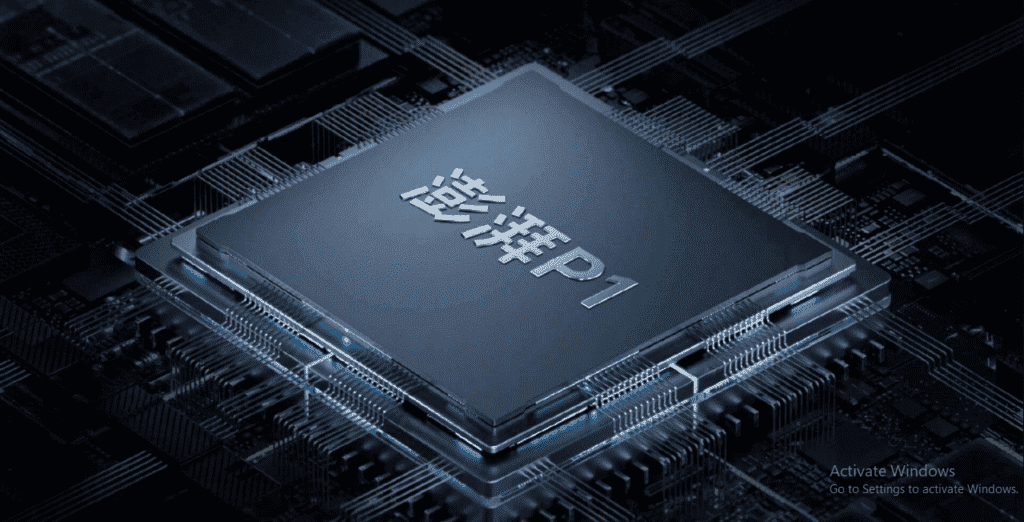On the Xiaomi 12 sequence launch occasion earlier in the present day, the Chinese language producer additionally launched its third self-developed chip. The corporate calls this chip Surge P1. Xiaomi’s first self-developed SoC is the Surge S1 which was launched in 2017 and mounted on Xiaomi Mi 5C. Its second self-developed chip is an ISP chip, Surge C1 launched earlier this 12 months with the Xiaomi Mi MIX FOLD. Xiaomi Chairman and CEO, Lei Jun, stated that Xiaomi 12 Professional comes with the Surge P1.
In line with him, after 18 months of analysis and growth, the chip has achieved a 120W single-cell resolution. He claims that that is far harder to realize than the 120W dual-cell resolution. The circuit design is twice as sophisticated, the mode switching management logic is 7 instances extra sophisticated. Moreover, the startup and safety circuits are 9 instances extra sophisticated. As well as, the drive circuit design is 6 instances extra complicated.
Lei Jun stated that with the help of this chip, the 4600 mAh battery might be absolutely charged with 100% energy within the quickest mode in 18 minutes.
Xiaomi stated that previously single-cell fast-charging system, to transform the 20V voltage enter to the cell phone right into a 5V voltage that may be charged into the battery, a series-parallel circuit of 5 totally different cost pumps is required. Furthermore, numerous cost pumps and an total series-connected structure will generate a variety of warmth. In precise use, it’s unattainable to realize full-power operation for a very long time. It’s arduous to realize a 120W high-power quick charging.
To unravel this drawback and attain a 120W quick charging, Xiaomi has developed two sensible charging chips and put them into the Surge P1. This two take over the complicated construction of the standard 5 cost pump. They convert the high-voltage energy enter to the cell phone into a big present that may be immediately charged to the battery extra effectively.
Surge P1 Benefits
Xiaomi stated that because the trade’s first resonant charging chip, the Surge P1 has a 4:1 ultra-high effectivity structure with adaptive switching frequency. The effectivity of the resonant topology is as excessive as 97.5%; the effectivity of the non-resonant topology is 96.8%; the warmth loss has plummeted by 30%.
The Surge P1 itself undertakes a variety of conversion work. Conventional cost pumps solely want two working modes (transformation, pass-through). However the Surge P1 must help 1:1, 2:1, and 4:1 conversion modes. All modes must help bidirectional conduction. Which means it wants a complete of 15 permutations and combos of mode switching management. That is 7 instances that of conventional cost pumps. The ahead 1:1 mode makes the brilliant display charging extra environment friendly; the ahead 2:1 mode is appropriate with extra chargers; and the ahead 4:1 can help 120W charging; the reverse 1:2/1:Four mode is obtainable.
In line with Xiaomi, the Surge P1 can also be Xiaomi’s highest charging effectivity 4:1 charging chip. It may possibly obtain an ultra-high energy density of 0.83W / mm². Additionally, LDMOS has reached the trade’s main ultra-low 1.18mΩmm² RSP.
The Surge P1 chip wants three totally different FLY capacitors with totally different voltage resistance. Every capacitor wants an unbiased open and brief circuit safety circuit. Additionally, every working mode must strictly management the pre-charge voltage. The variety of energy tubes is shut to 2 of the standard cost pumps. Due to the rise in topology design and purposeful complexity, every Surge P1 chip must cross greater than 2500 exams earlier than leaving the manufacturing unit. That is a lot larger than the standard cost pump.



